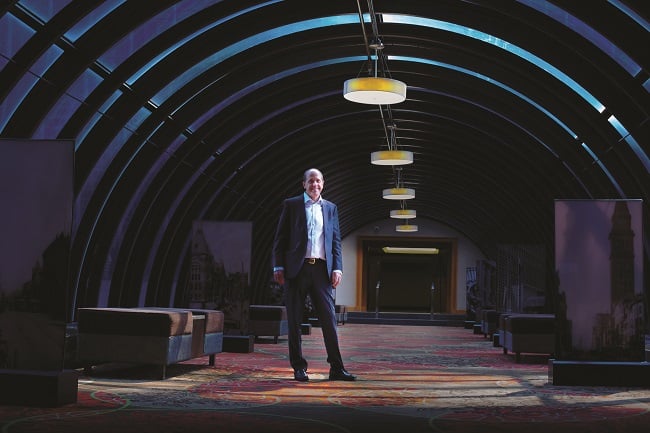
Leadership is about decisions - so much so that a Chief Executive Officer may as well be called a Chief Decision Maker. Yet 60% of executives surveyed by McKinsey think their companies make bad strategic decisions more often than good ones. The suggestion here? There’s room for improvement in the CEO’s core discipline: decision-making.
Sam Reese is CEO of Vistage Worldwide. He has been a Vistage member for over ten years, came to us as CEO and board member for Miller Heiman, and held senior positions with Corporate Express, Kinko’s Inc., and British Telecom. He is, in short, an experienced decision maker, with powerful transformative insights into how executive decisions can and should be made - and he’s not above learning from his own mistakes.
- You may like: Take a break - and grow your company
“I took my first CEO position when the dot-com bubble had just burst,” says Sam of his own career. “I was eager to create alignment and instil team spirit, so when I needed to hire a new division head, I only interviewed one client. He had multiple referrals, good credentials, knowledge of the business and 100% popular support. He was also 100% wrong for the job, and could have ruined the company. This experience taught me a big lesson: it’s important to develop and stay true to a decision-making process. How you arrive at a decision is just as important as what decision you make.”
So, what is this decision-making process?
Decision-making as a discipline
Sam claims that, just like any CEO, he’s a work in progress. “I still make mistakes,” he admits, “but fewer than I used to, because I invest time and energy in my decision-making process.”
That investment has revealed four drivers of executive choice: purpose, mindset, rigour, and the available time and space. These drivers structure the framework which he applies to all major decisions, and are the cornerstone of the decision-making discipline for which he advocates.
Purpose
Purpose is the first step in the process of making a decision. Newly-promoted CEOs are often prone to limited vision - they’re used to making decisions in a departmental context, rather than looking at the bigger picture.
"When you step up to the CEO role,” Sam explains, “you have to think about what benefits the company as a whole. This complexity makes decision-making more challenging, regardless of company size.”
To meet those challenges, it helps to have a clear sense of what your company stands for. Sam interrogates his executive decisions with three main questions:
- Does it align with the company’s mission, vision and purpose?
- Will it benefit the company as a whole?
- Does it accurately reflect the company's values and beliefs?
A “yes” to all three means he’s on the right track.
Mindset
It’s easy to believe that there’s only one right answer to any given question. Experience shows that that’s seldom true - good choices come from thoughtful processes, and the best choice is the one in which you’ve invested time, energy and commitment.

It’s important not to make decisions that simply make you, personally, look or feel good. “Over time,” says Sam, “I’ve developed the awareness to check my ego and make decisions based on a company-first mentality.”
It’s the impact on the company that matters - if that means pivoting, changing or rolling back, so be it.
Rigour
“You know you’re off-track when every decision feels like starting over,” says Sam. “Rigour allows you to make decisions faster and with more accuracy.”
Rigour is a blend of consistency and context. You need context to make an informed decision, and you need to understand at least some of the details - you also need to check that context against a proven, consistent process and ask yourself if you need to change.
Sam’s disastrous hire shows a potential pitfall in relying on majority opinion to provide context. A popular decision may not be a good one. Sam has developed his approach since he was a young CEO. “I still listen to other people’s opinions,” he explains, “but I process them differently. I treat them as inputs instead of instruction and make sure that every decision I make is uniquely mine.”
Time and space
CEOs exist in a high-pressure work environment where time is scarce - and these pressures can cause many to make hasty or haphazard decisions on the go. Sam advocates processing your decisions without interruption, and sets aside a chunk of time each day to reflect and work through his decisions.
“Treat decision-making as a marathon instead of a sprint,” Sam explains. “Don’t be afraid to tell people that a decision will take time.”
Train your decision-making
“My process works for me,” Sam told us, “but it’s by no means the only way to make a good decision. It’s important to develop a model that’s authentic to you. After all, it’s not the model that matters most. What counts is that you rigorously apply a conscious process that leads to better decisions - and better results for your firm.”
Whatever that process is, whatever drivers and key factors it rests on, it ultimately has to blend three capacities:
To avoid being drawn into an endless loop of thought and consideration and actually execute a decision, Sam suggests going back to the very first question he poses himself at every decision point. You have a plan. Does it align with the mission, vision and purpose of your company? If so, it’s probably ready to go.
Much later in his career, Sam had the opportunity to create a new CFO position. Instead of short-circuiting his process to get started quickly, he talked to colleagues about the decision, thought through the financial implications, and listened to his gut when reviewing the applications, sticking to the rigorous vetting process he’d use for any other hire.
“It turned out to be one of the best decisions of my career,” says Sam. “The CFO I chose was worth his weight in gold.”
